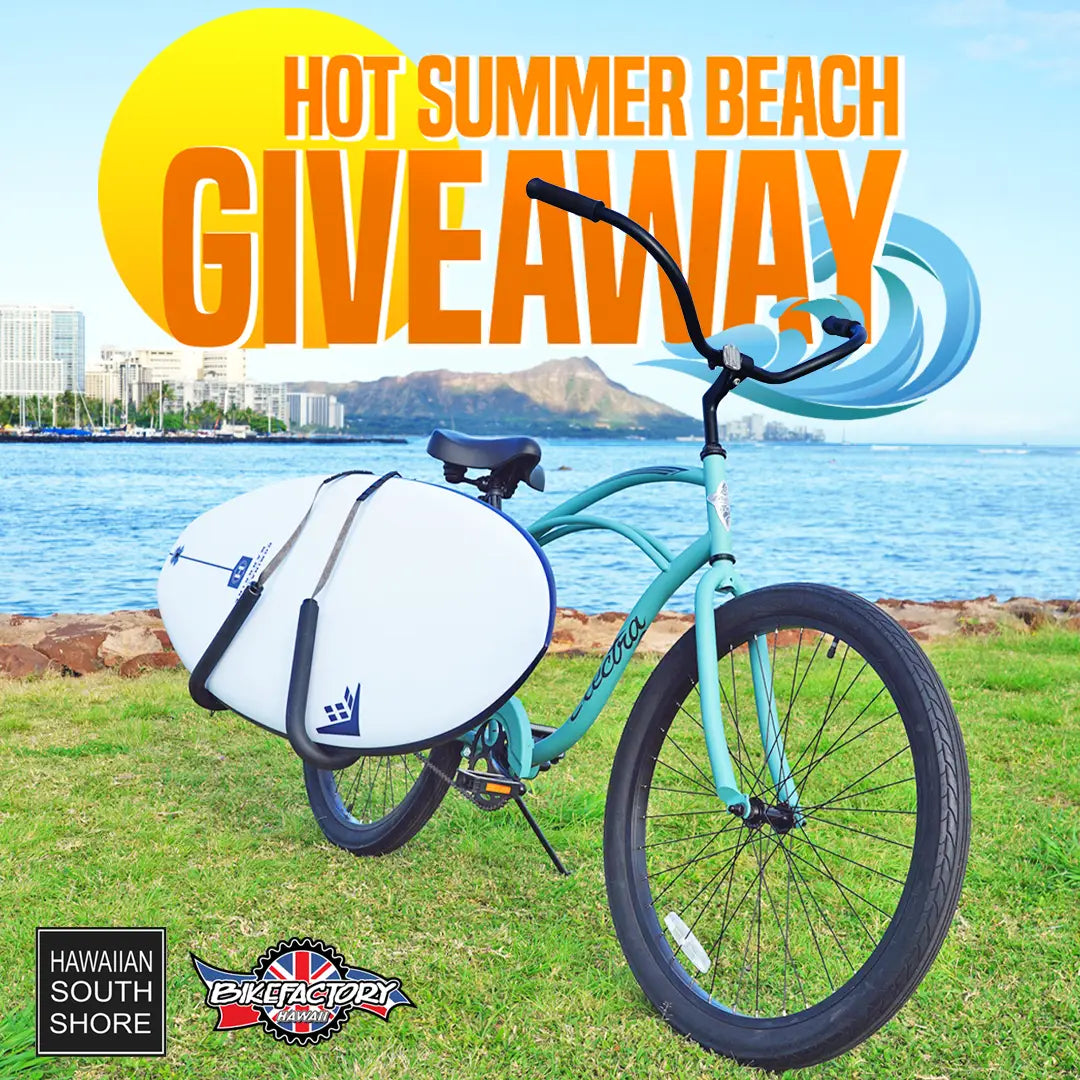Hawaiian South Shore June 2021 Newsletter
Share
NEWSLETTER JUNE 2021

Hawaiian South Shore's Own Longboard Fin Line KAIMANA
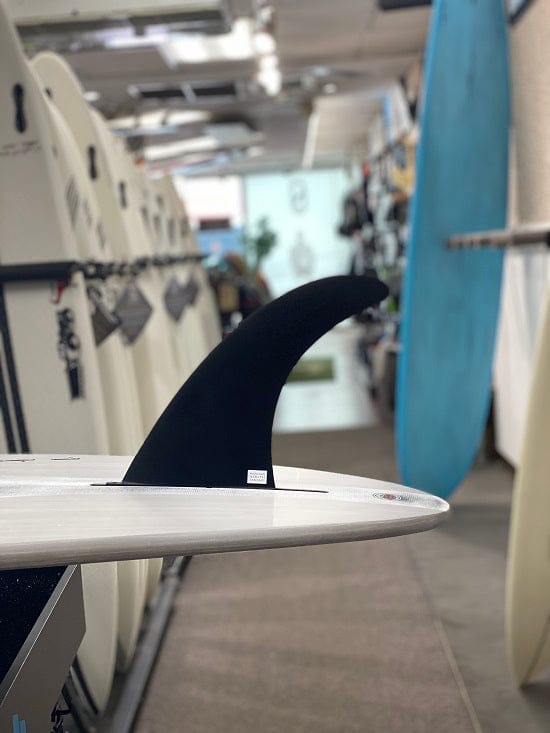
Here at Hawaiian South Shore, we are excited about a lot of things—surfboards, fins, longboarding, you name it! And every once in a while we get to take that excitement and turn it into something tangible and concrete.
Recently, we combined a few of our passions and developed a line of Hawaiian South Shore longboard and mid-length fins.
Made from a special form of G10 material that is even lighter and stronger than normal G10, and that’s pretty impressive, considering G10 is the industry standard for single fin construction.
Renowned shaper Dan Mann once told me that he loves the feel of G10 fins, and also appreciates the fact that they don’t chip when you bang them on something, like normal glass fins. G10 uses epoxy and fiberglass laminate and is used in a number of different industries. Fins made from this material are extremely durable, but also offer the advantage of controlled flex in the tip, which helps your board adjust to the contours of the wave and accelerate out of turns.
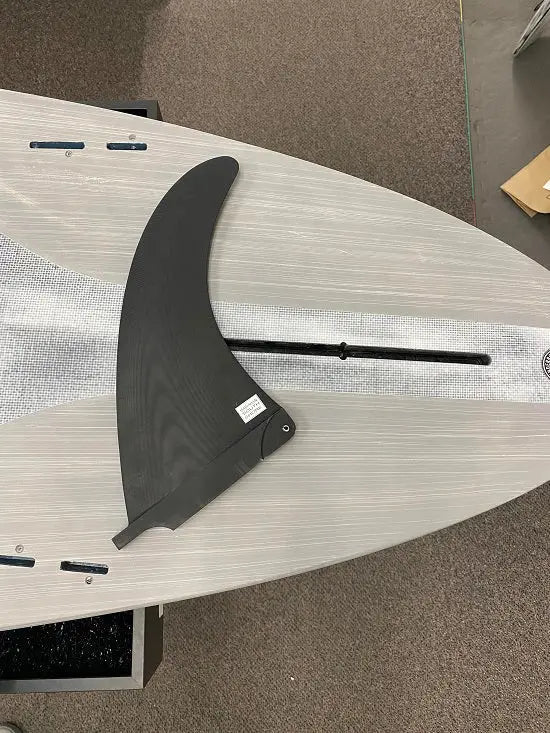
Our line of fins is called the Kaimana, which combines two Hawaiian words—Kai, which means ocean, and mana, which means power. As the name suggests, these fins are built to add power to your surfing, whether you are on a nose rider, a high-performance longboard, or a mid-length.
The Kaimana fin collection features a traditional rake fin outline and comes in 7", 8", 9", and 10" options. The 7" and 8" fins feature a thinner foil for increased release through turns and are perfect for mid-lengths and 2+1 setups on performance longboards.
The fins are machined in order to dial in this super sensitive foil, resulting in a consistent fin design that is reliable and effective. Meanwhile, the 9" and 10" fins provide added hold and drive and are perfect for traditional single-fin longboards and noseriding.
Regardless of the type of surfing you do, these fins are the perfect complement to your quiver. If you are looking to liven up your surfing or simply discover a new feel on an old classic board, the Kaimana fin series is the answer.
The Story of Outerknown—Kelly Slater’s Environmentally Friendly Fashion Company

Kelly Slater is the biggest name in the history of surfing. He has won 11 world titles, dominated competitive surfing for nearly three decades, helped drive the progression of the sport, basically served as the face of Quiksilver for 30 years, and been declared the GOAT by just about anyone who has ever commented on the act of riding waves.
He has also transcended surf celebrity to become a public figure on a grand scale, enjoying a stint as a guest star on Baywatch, famously dating actresses and models such as Pamela Anderson, Cameron Diaz, and Gisele Bundchen, and starting the widely celebrated Surf Ranch. He’s friends with Jack Johnson and Eddie Vedder, was head man for his own band that got (sort of) big in Japan, and has invested in a number of industry brands. In other words, Kelly Slater is a big deal—so anytime he does anything, people take notice.
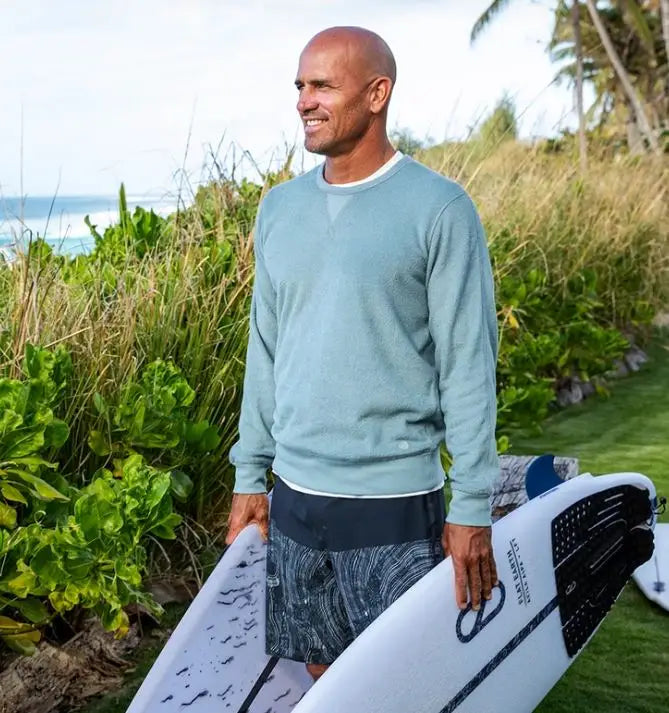
In 2015, the surf world was waiting with anticipation to see who Kelly Slater would sign with. He’d recently left lifelong sponsor Quiksilver and had empty real estate on the noses of his surfboards, and the team that he ultimately joined was going to be big news. But rather than joining a new brand, Kelly Slater did something totally unexpected and started his own. Right around the time he acquired a large interest in Firewire and established his Slater Designs board line, he also announced that he’d be heading up a new clothing brand called Outerknown.
There was a lot of hubbub around this announcement, of course, and everyone was eager to see what the brand would look like. But when the company finally launched, it wasn’t what most people expected. Instead of a traditional surf brand, or even a surf themed boutique, Outerknown was a beach lifestyle/environmentally conscious fashion collaboration with renowned designer John Moore. Together, the two wanted to create something that was different—in a good way—a high-end line of threads created from sustainable products such as fabric made from recycled fish nets that had been harvested from the ocean. It was important to them that the products be high quality, long-lasting, and made with as little environmental impact as possible.
There’s a cost associated with sourcing sustainable materials and using Fair
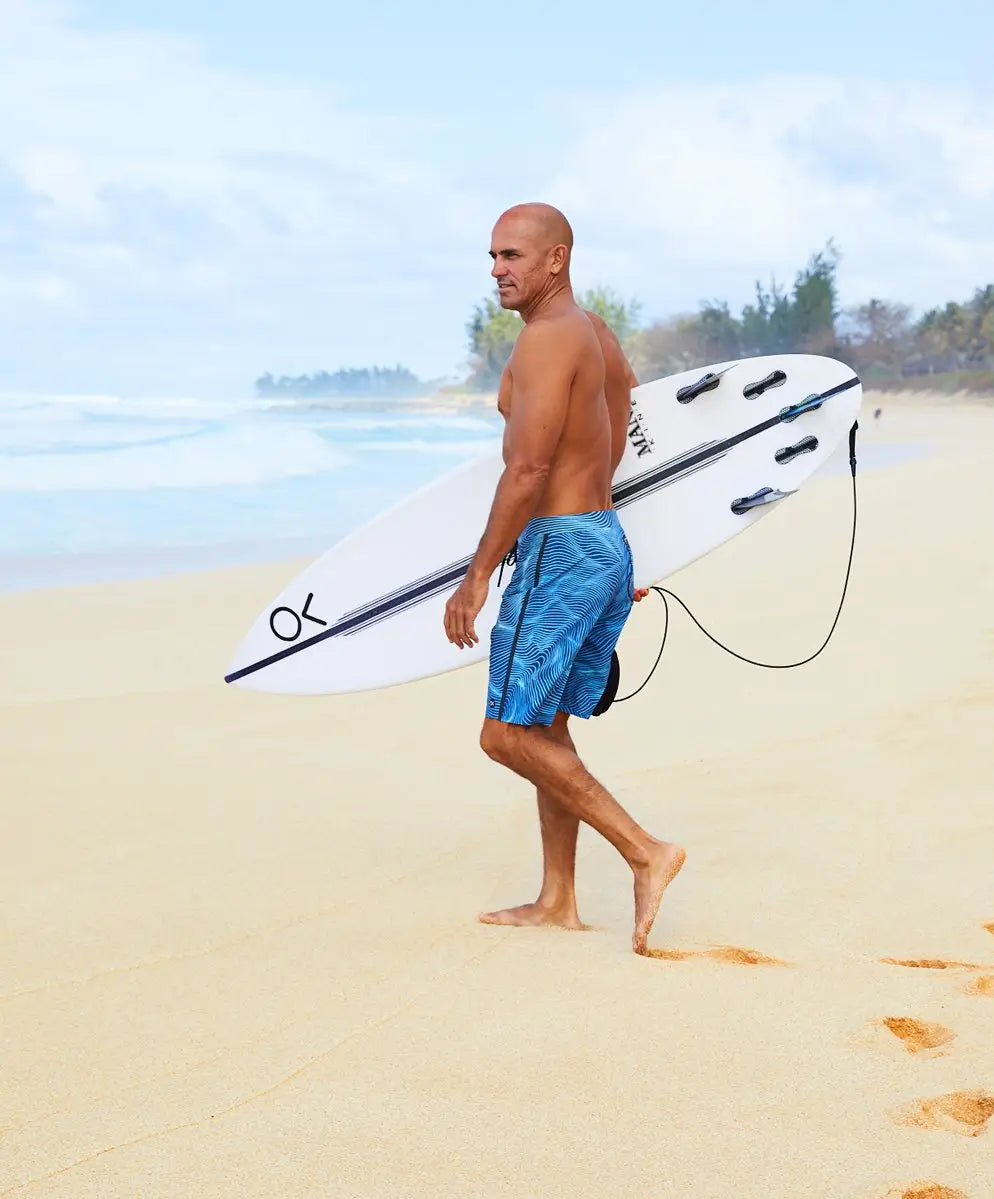
Trade factories that can support green production processes, and the price of Outerknown clothing came as a bit of a surprise to a lot of surfers. But people quickly realized that they were paying for both quality and a socially conscious commitment to the environment. Their money was going toward clothes that were as durable as they were fashionable, and that could be worn without guilt or worry about what damage was done to the world during their creation. An impressive 90% of Outerknown’s fibers are either organic, regenerated, or recycled, while 100% of their board shorts are built from renewable or recycled fibers made out of plastic bottles. In addition, their jeans are accredited with SEA Jeans, which offers a lifetime guarantee that the jeans will be repaired, replaced, or recycled, with the ultimate goal of ensuring that no denim ends up in landfills. Outerknown also uses cotton grown without pesticides, as well as econyl, the fabric mentioned before that is made from recycled plastic products such as fish nets.
As you can clearly see, Outerknown lives up to its claim to be an environmentally conscious clothing brand, which is refreshing to see in an industry that is actually quite destructive to the planet. The production of clothing involves a huge amount of water and other resources, and most people are unaware about how much impact their contents of their closets have on the environment. In a world that is largely driven by constant consumerism, clothes are a largely invisible blight on the environment.
However, they are also a necessity—even here in Hawaii, where it’s warm all year, we can’t exactly go walking around town naked!😂😂 Since we have to buy clothes, the obvious answer is to buy high-quality, durable clothes that have the lowest possible impact on the environment, and that also look great and feel comfortable. Fortunately for the socially conscious men in the world (and women too, as of last year, when Outerknown expanded to include a women’s line!), it is possible to do exactly that with Outerknown.
This is why we are so excited to carry Outerknown here at Hawaiian South Shore—not just because they are fashionable clothes from the greatest surfer of all time, but also because we believe in the company’s ethos and support its commitment to the environment. As it turns out, it actually is possible to have the best of all worlds—sometimes it just takes surfing’s biggest celebrity to make it happen.
June Member of the Month: Q&A with Devin Punn Puapong
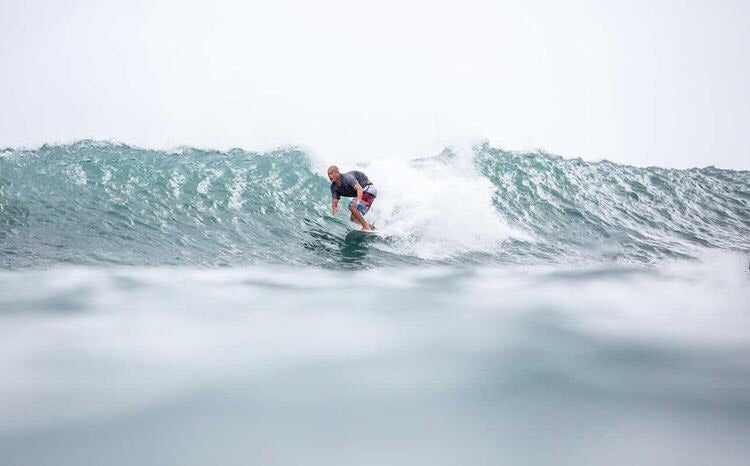
*Photo credit: Eric Wehner Photography
When and why did you initially get into surfing?
I’ve always loved the ocean but never started surfing until I finished my training and moved back home in 2009. A high school friend and I signed up for lessons in Waikiki. I remember the instructor telling us if you want to get good at surfing just gotta go plenty. So I started going plenty… still not good. Haha
Did you have a time period you laid off from surfing? If so, when and why did you start back up?
Only time off has been due to injuries and have always gotten back into the water as quickly as possible after.
What is your favorite thing about surfing?
My favorite thing about surfing is the connection you feel with the ocean and nature. I also love being able to share this passion with my children… except when they snake waves from me. Haha. I have also been very lucky to meet a lot of amazing people through surfing.
Where is your favorite place to eat after surfing? What is your favorite item on the menu?
Royal kitchen or Izakaya Nonbei. All the food is Ono!
What other hobbies do you have besides surfing?
I enjoy watching my children play sports. We also try to keep fit and go hiking when we can.
What type of work do you do?
I’m a docktuhr
Tell us about the board you recently purchased from us. What model and size is it, and how do you like its performance?
Last board I got was for my son. 5’3” 22L sci fi 2.0. He absolutely loves it. Just this past week I saw him take one of the biggest drops I’ve ever seen him take… too bad he landed on his face. Nah for real the board is working awesome for him and he is stoked.
Do you have any additional comments?
Thank you for always being so helpful! You guys are the best!
SURFBOARD REVIEWS
Definitely one of my favorite boards. Especially in the lightspeed construction!

The surfboard has good get up and go speed from takeoff but can still pivot when you set the rail. It’s a great balance between PU and EPS. It’s not extremely buoyant like EPS so it dampens some of the chatter when it gets a little bumpy. For me it works best in the 2-5ft range (waist to head high for myself I’m 6’1” 185lbs).
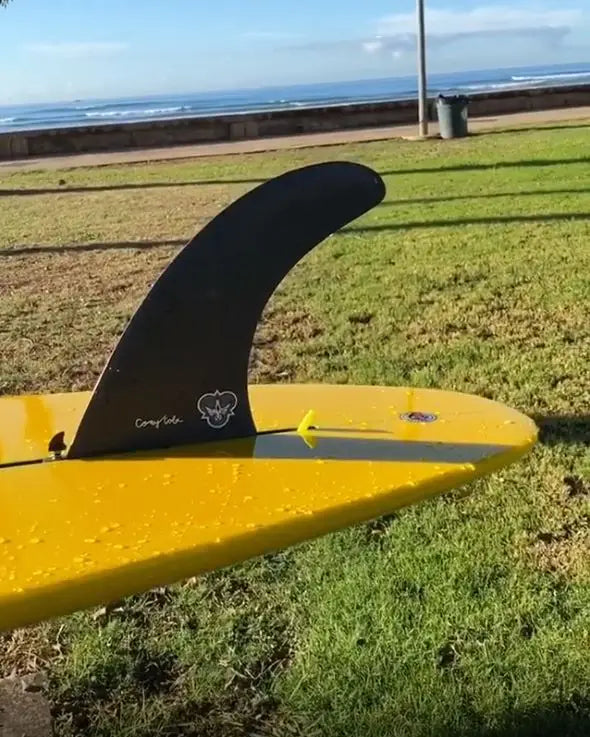
Super fun board! Paddles in easily to waves (probably even better than my 9’0) and super fluid. Moves easily with my body. It’s a pretty fast board as well. I like to sit pretty deep mostly to get away from crowds but I usually never make it past the section. With this board I can! Noticed I have to stand more in the middle of the board with both feet. It’s pretty durable.
Review by: Leighna Lariosa
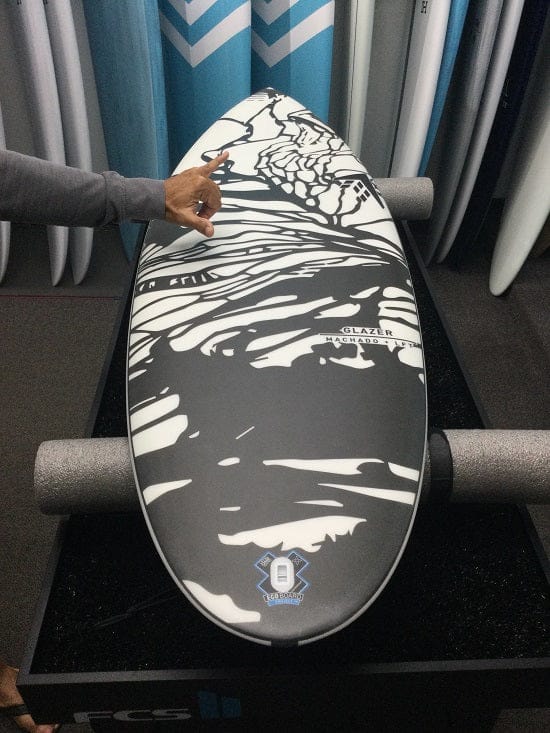 and drive off the top. 2 plus one is tricky and can be really stiff. In head high and bigger the rails started to grab but if it’s an open smooth faced wave, it worked. I’m 5’9, 150lbs and this board floats me very well! The Glazer will get me through the summer for sure.
and drive off the top. 2 plus one is tricky and can be really stiff. In head high and bigger the rails started to grab but if it’s an open smooth faced wave, it worked. I’m 5’9, 150lbs and this board floats me very well! The Glazer will get me through the summer for sure.Perfecting the Art of Yakitori and Tsukune at Higoto Japanese Eatery
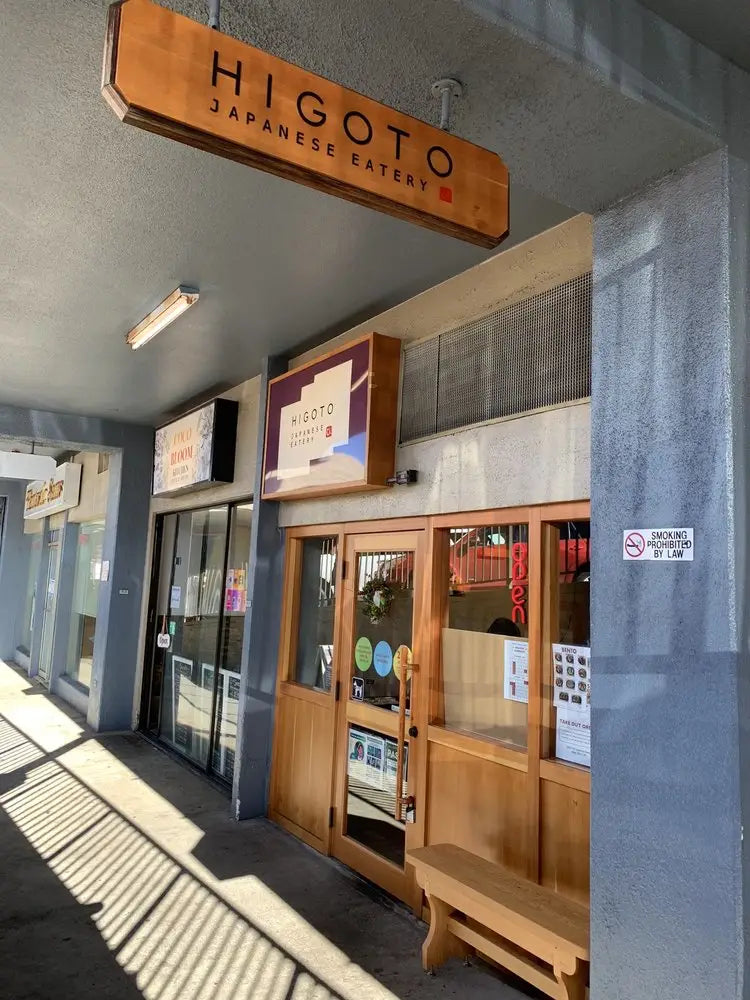
The other day I was at one of my favorite Japanese restaurants, and I noticed a couple dining at a table near to mine. They had ordered yakitori, which is sort of like a Japanese shish kebab, and tsukune, which is a skewered meatball (and one of my favorite Japanese dishes!). After receiving their dishes, the couple quickly called the waiter back to the table and complained that their meat was burned. They were surprised when the waiter explained to them that this was the way it was supposed to be. As it turns out, these meat dishes are supposed to be soft on the inside and charred on the outside. (You will also notice this with some Japanese hamburgers.)
As many of you know, Japanese have very particular customs related to their food, and many dishes are expected to be cooked properly and in keeping with tradition. In addition to making sure the meat is cooked properly (charred!), the skewers should not extend beyond the meat. Instead, the final piece should rest on the end of the skewer so there is no burnt wood sticking out of the yakitori or tsukune.
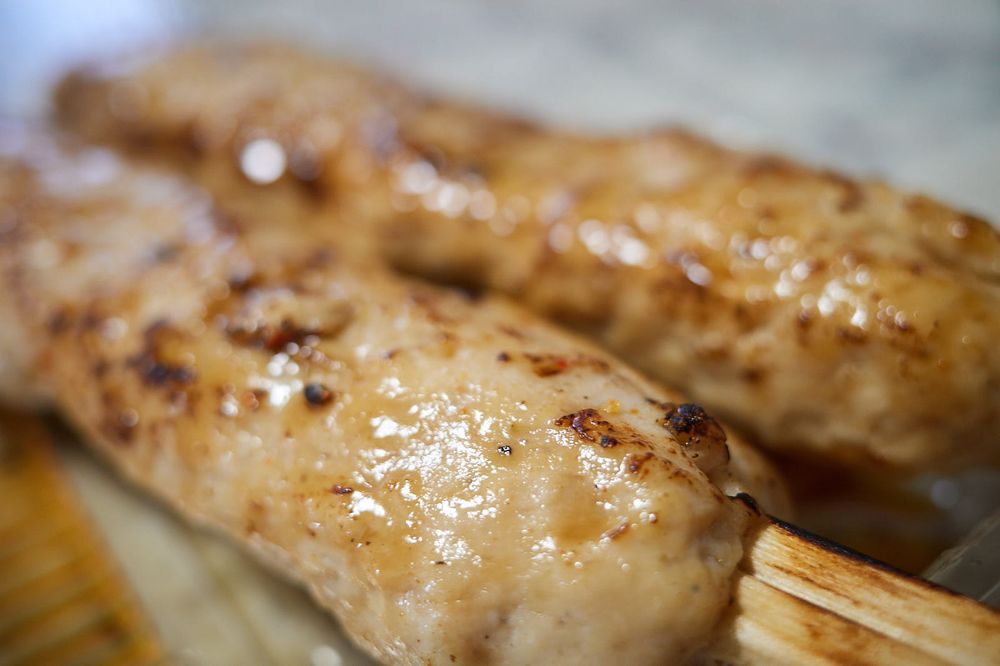
One of the best places to enjoy these delicacies on Oahu is Higoto Japanese Eatery. In my opinion, it is the best bento place on the island. The yakitori and tsukune there are the best I’ve ever eaten! They also have a chicken dish marinated in sake (the bacteria in the sake causes the meat to be really tender), and incredible salmon dishes as well.
If you have never tried yakitori or tsukune—or if you are just looking for a new Japanese restaurant to check out—I highly suggest that you pay a visit to Higoto! It’s located in Kaimuki next to Times super Market. They are open Wednesday - Sunday 11am-4pm.
The History of Scott Sandals
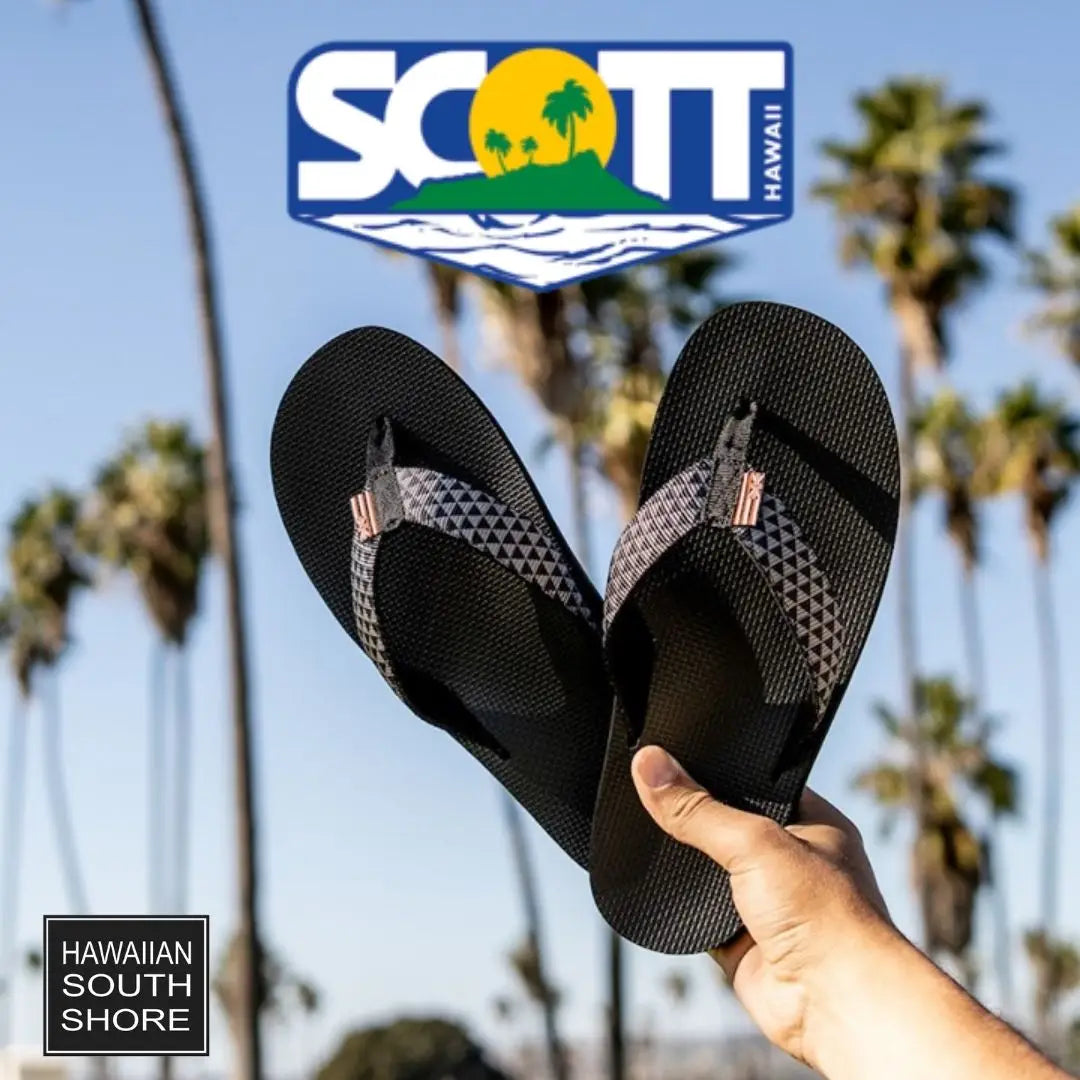
Slippers are a ubiquitous of the local wardrobe here in Hawaii. Literally everyone in the state owns at least one pair, and most of us spend the majority of our time in slippers. While people in other places call them by a number of different names, such as flip flops, sandals, and thongs, to us they will always be slippers—and they might as well be the official Hawaii state shoe!
Because our local culture is so important to us here at Hawaiian South Shore—and because we spend all day, every day at the beach, where there’s no reason to wear anything other than slippers—we have long wanted to support and stock a local slipper company. After spending a lot of time researching the various slipper companies based here in Hawaii, we decided to stock Scott Sandals, a local company that has been making quality slippers for 80 years. Scott Sandals are known for their quality and craftsmanship, and come in a variety of different materials, including nylon, leather, vegan leather, and rubber. But many people are unaware of the incredible history behind this brand and the incredible footwear that they create.
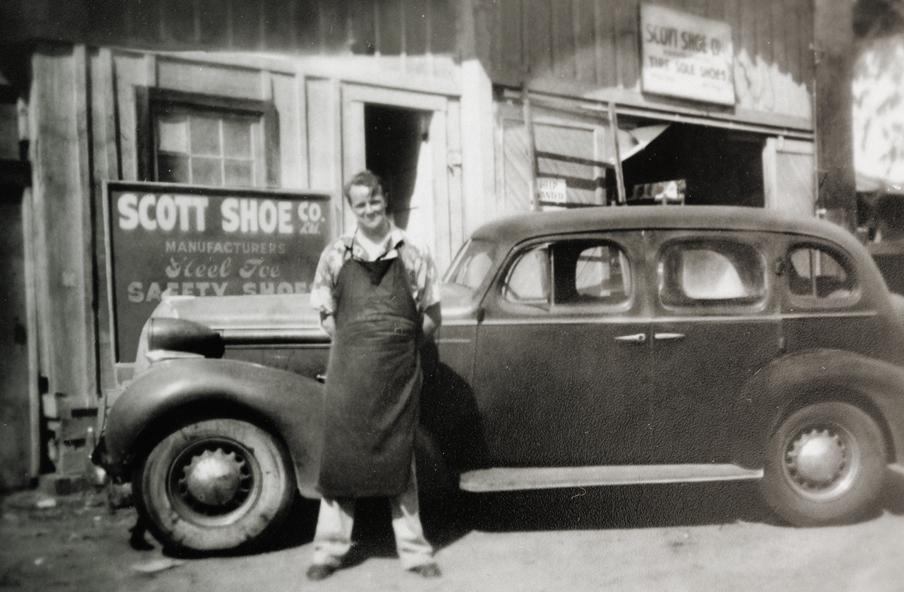
Photo Credit to: scothawaii.com
The Scott family originally came to Hawaii for a vacation in 1932, and they didn’t end up going home. Instead, they stayed in Honolulu and opened a shoe factory, shipping 28 tons of machinery out to the islands from their shoe company in Los Angeles. A few months later, the company partnered with Ala Moana Opportunity school to provide job opportunities for young students in Hawaii. The company was up and running, and began making men’s shoes, and then eventually expanded into women’s shoes.
Material shortages during World War II led the company to rethink its product line, and it eventually discontinued its heavy shoe line and focus solely on slippers. Over the next 60 years, Scott Sandals became a widely recognized brand in Hawaii, to the point that the show Baywatch contracted with them to use both off-the-rack and custom slippers in the show in 1999. Since then, Scott has continued to grow and expand, starting a Tahiti line in 2019 and celebrating its 88th anniversary in 2021.
With so much history behind the brand, it’s no wonder that Scott Sandals have become a lasting presence here in Hawaii. While lots of slipper companies have popped up over the years, and there will always be people who prefer cheap slippers from Foodland, when it comes to high-quality, comfortable casual footwear, Scott Sandals is one of the originals—and their experience shows in ever new pair of slippers they make. That’s why we are excited to welcome Scott Sandals to the Hawaiian South Shore family, and to stock their footwear here at our shop.
VERTRA Sunscreen
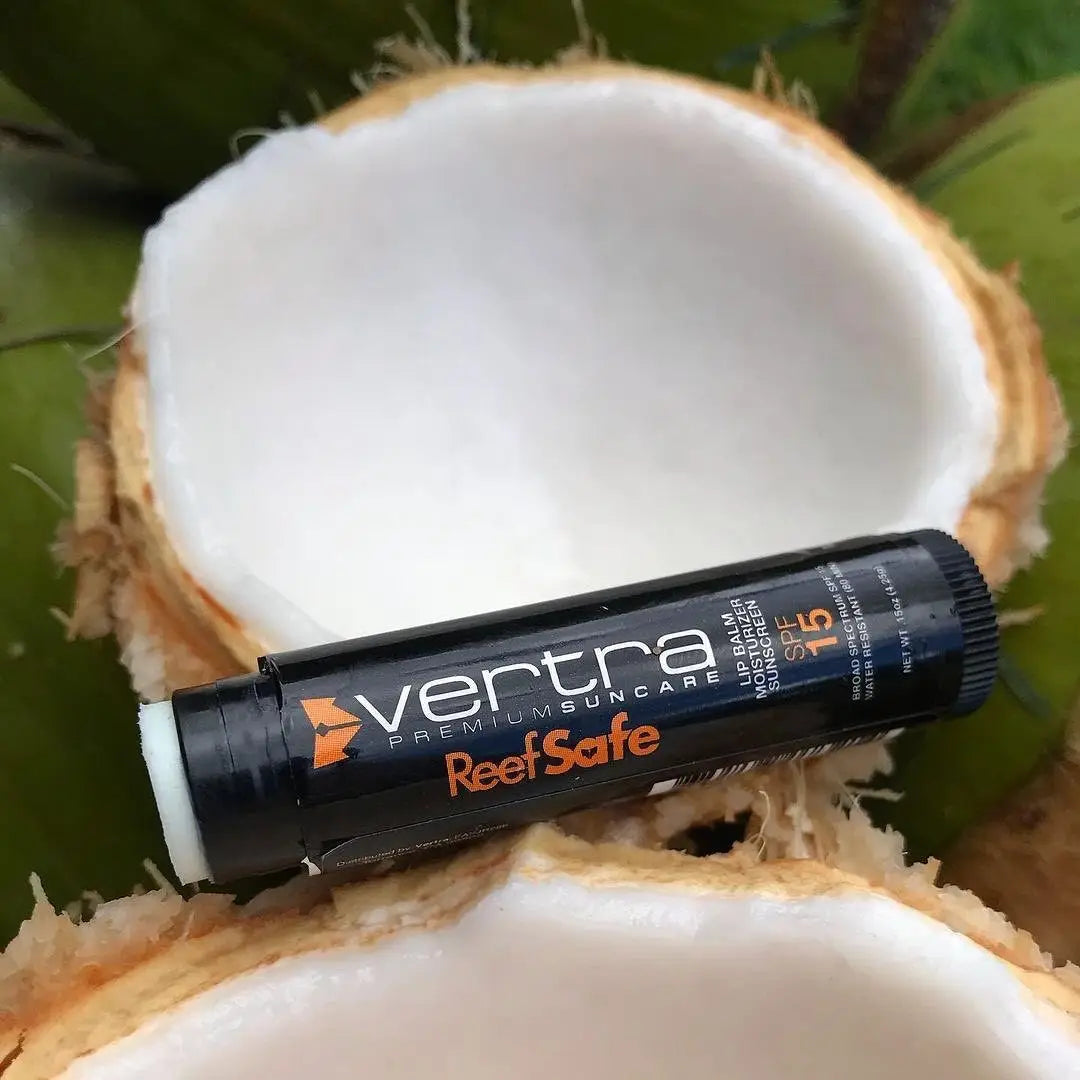
Surfers spend a lot of time in the sun, so when it comes to protecting our skin, we naturally want the best products possible. While there has been a wide range of generic sunscreens available for decades, the good stuff was often hard to come by. Many serious surfers found themselves shopping in department stores, buying SPF 50 foundation sticks from makeup companies such as Shiseido. With this market for quality sun products in the surf industry, it was only a matter of time before a company began catering specifically to wave riders looking for premium sun care products.
Vertra was the first company to do so, opening for business in 2004, just down the street from Hawaiian South Shore. Started by a group of Hawaiian surfers, the brand understood what athletes needed from sunscreen—quality, ease of use, and long-lasting durability that could stand up to long hours in the elements. Vertra ended up creating a cosmetic-quality line of sunscreen products that quickly dominated the surf industry. Over the years, it has expanded to the snow, paddling, lifeguarding, and swimming industries, and developed a range of skin care products such as lip balms, lotions, sprays, and after-sun-care products.
Vertra’s line of sunscreens includes a number of targeted formulas and signature sticks from some of the sport’s top athletes. These include:
Vertra SHANE DORIAN Signature Face Stick SPF 38 Kona Gold: This
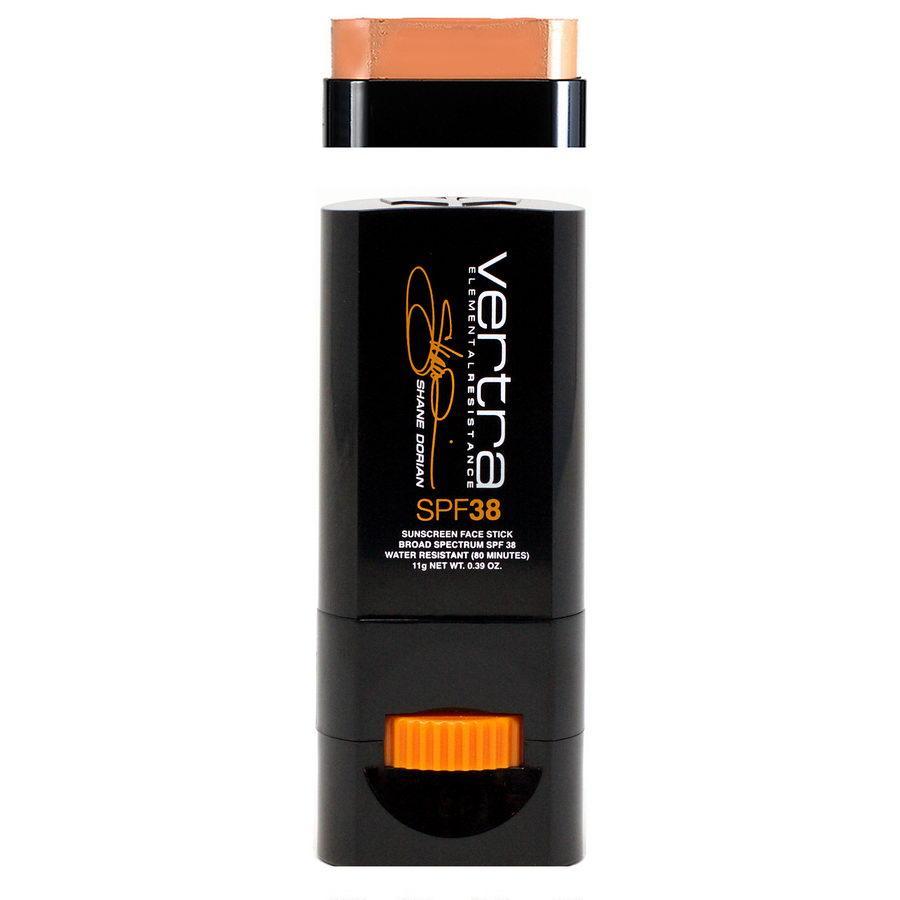
formula offers broad-spectrum sun protection against UVA and UVB rays, and comes in a beige/yellow tint that matches the skin color of former world tour competitor, big wave hero, and legendary waterman Shane Dorian. The goal with the face stick was to give Shane ultimate protection from the sun, but without the greasy, off-colored appearance of traditional sunscreens or zinc sticks. The sunscreen is reef-safe, paraben-free, water-resistant, and appropriate for kids.
Vertra Face Stick SPF 50+ Pearl White: This white-colored face stick formula offers comprehensive protection from extreme sun due to its 50+ SPF rating. The white color ensures that you don’t miss any vulnerable spots on your skin when applying, but can also be blended in for a more natural look. It offers both UVA and UVB protection, is free of parabens, octinoxate and oxybenzone, and features 80-minute water resistance.
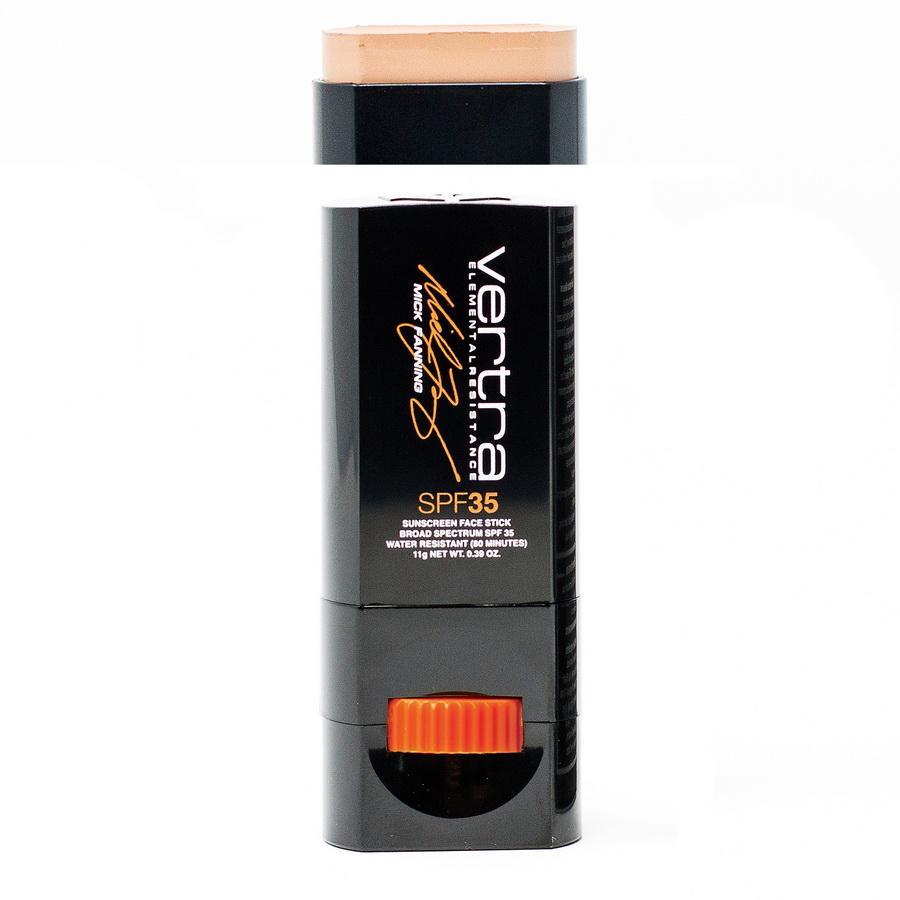
Vertra MICK FANNING Signature Face Stick SPF 35 Beige: This signature face stick from world champion Mick Fanning provides easy, lightweight application, combined with effective coverage and an understated color that blends well with the typical, tanned skin tone of the daily surfer. It is non-greasy and free of chemicals such as parabens, oxybenzone, and octinoxate, which makes it safe for both your skin and the reef. The small package makes it perfect to take along on surf trips, and like all other Vertra products it is cruelty-free and not tested on animals.
Vertra Face Stick SPF 45 Clear: For those who prefer a clear formula that does not show up on their skin, Vertra’s clear SPF 45 face stick still offers comprehensive protection from extreme sun exposure. The non-greasy formula adheres to the highest cosmetics standards and is both reef and skin friendly. It is appropriate for children and adults with sensitive skin, and, like all Vertra products, is alcohol-free. It is also water resistant to the FDA maximum standard of 80 minutes.


